What is a Holster Claw?
What is a Holster Claw?
There's been a lot of talk lately about holster claws, but unless
you've done a ton of research and/or keep up with the firearm or
concealed carry industry lingo- how the heck are you supposed to know
what a holster "claw" is?
Let me tell you: a holster claw is present on most AIWB Holsters (appendix carry specific holsters) and is used to tuck the grip into the body to avoid firearm printing while carrying concealed. The claw comes in several forms, but most commonly, it presents itself as a piece of plastic mounted under the trigger guard. See below:
The Holster Claw or "Grip Concealment Claw" as we at Dara Holsters call it, is mounted right underneath the trigger guard. In some cases, like with Light bearing AIWB Holster shown on the left, the claw has to be relocated due to the light attachment, but the general location stays the same. Some claws are relatively small, and appear to be cut pieces of holster material, while others provide more of an aggressive approach, such as the ones that we currently use on our AIWB Holsters. The benefits of our larger claw is that they simply work better and don't create a wider foot print.
What does the Holster Claw do?
Essentially, the Claw uses the rigidity of the gun belt to push the grip side of the holster and gun into your body to prevent the grip from sticking out, a common occurrence during concealed carry.
As you can see in the picture above, the claw aligns with the belt attachment to ensure that contact is made to the belt. The clip attachment is the point of contact that secures your holster to the belt- if the claw is not correctly aligned, it will not work properly to tuck the grip into the body. A perfectly executed AIWB Holster with Claw will tuck the grip completely to the body, like in the picture below:
Do you see how the grip of the gun is flush to the body? This is because of the claw. The Grip Concealment Claw allows carriers to conceal larger firearms that they wouldn't have been able to conceal otherwise. Before the claw, you had to rely on a holster maker to know how to position the belt clip in order to reduce printing or carry a smaller firearm. With the Claw, even folks on the slimmer side can successfully conceal a full size firearm with ease.
Check out Jon in the picture below:
Jon is carrying Appendix Carrying a Glock 19 in our Slick Side AIWB Holster. This holster features the slimmest profile AIWB Holster on the market, completely with a Grip Concealment Claw and Tuckable Belt Clip. This holster is flying off the shelves, as it can help conceal almost any firearm for nearly any body type. Rockin' a dad bod? This holster may solve your printing and comfort problems!
What if I don't like the Holster Claw? Take it off. Most AIWB Holster claws can be removed with a Philips head screwdriver very easily. Our are removable this way, and you'll be left with a normal AIWB or IWB Holster.
My Appendix Holster has a Claw but it's not working. What do I do? This could be for a variety of reasons. The #1 reason for a Holster Claw not working is because the claw does not line up with the belt clip. You can tell just by looking at the holster itself. If it looks questionable, just slide your belt through the holster clip while the holster is off body. If the claw is positioned under the belt, it will never do its job. At Dara Holsters, every single order goes through 5 signature-required quality checks. One of these checks is dedicated to catching issues such as this. We guarantee your holster will be shipped out with perfect form and function.
Now, if the claw is lined up with the belt clip but still not producing the intended results, it may be due to two factors: a poor gun belt, or too small/poor placement of a claw. If the claw isn't even reaching the belt to push against it, you may be able to contact the manufacturer for a larger claw. If they don't have one, you should ask for a replacement holster or refund.
If the issue appears to lie with your current gun belt- this is a problem easily fixed! Just purchase a better quality belt- preferably something thick and sturdy, able to withstand the constant task of holding up your fully loaded firearm with ease.
Is the Holster Claw comfortable? It depends. How sensitive are you? How tight is your belt? The common rule is that concealing a gun should be comforting, not comfortable. But there's no reason why you can have both simultaneously within reason. If the claw seems too aggressive or unbearable, take it off and research other ways to tuck the grip in comfortably, such as a foam wedge. BUT, most people find the claw to be nothing short of a miracle worker.
Something to think about:
If you are in the market for a holster and unsure about the difference between an AIWB Holster with Claw and a regular IWB Holster, keep in mind: the claw is removable. You can purchase a holster with claw for appendix carry and remove the claw if you want to carry on the hip. The claw is simply an added bonus to aid in further concealment.
Let me tell you: a holster claw is present on most AIWB Holsters (appendix carry specific holsters) and is used to tuck the grip into the body to avoid firearm printing while carrying concealed. The claw comes in several forms, but most commonly, it presents itself as a piece of plastic mounted under the trigger guard. See below:
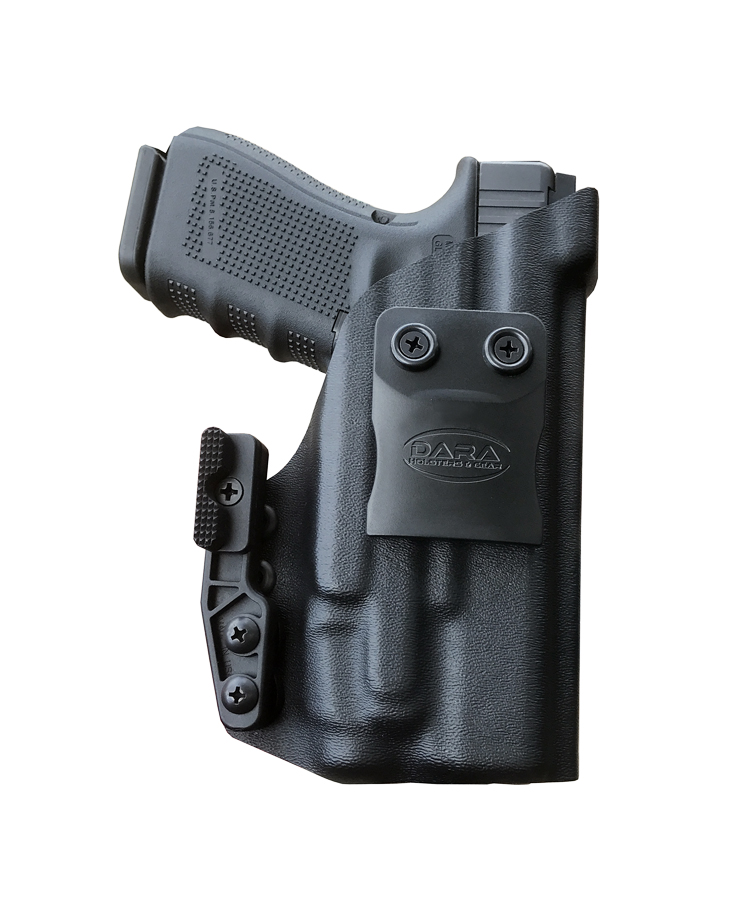
|
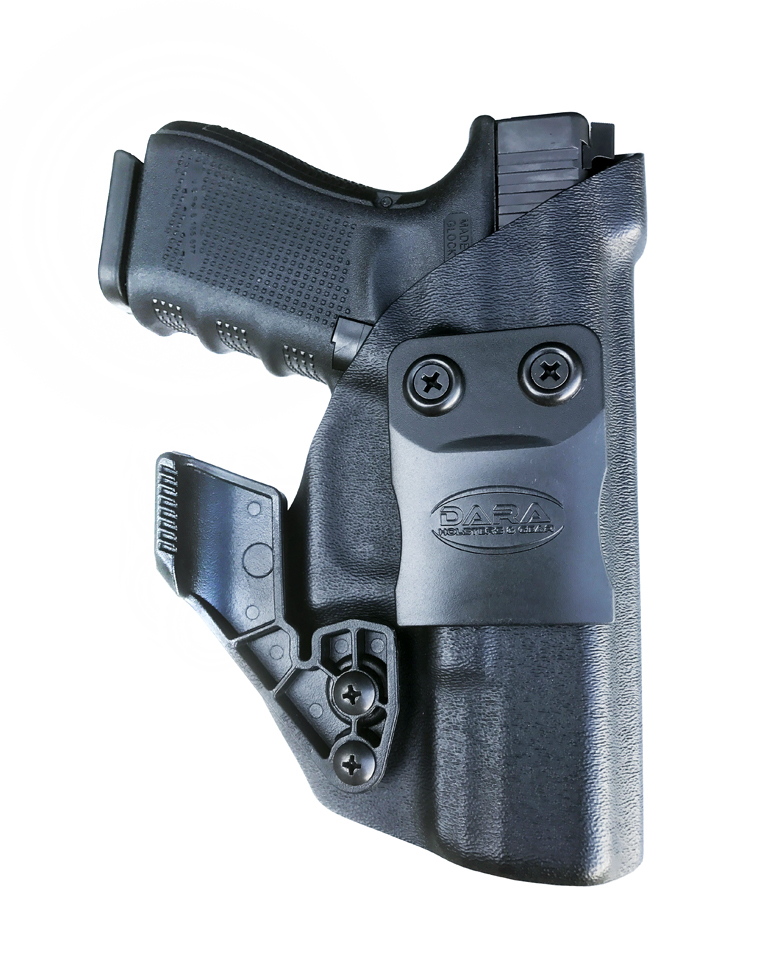
|
The Holster Claw or "Grip Concealment Claw" as we at Dara Holsters call it, is mounted right underneath the trigger guard. In some cases, like with Light bearing AIWB Holster shown on the left, the claw has to be relocated due to the light attachment, but the general location stays the same. Some claws are relatively small, and appear to be cut pieces of holster material, while others provide more of an aggressive approach, such as the ones that we currently use on our AIWB Holsters. The benefits of our larger claw is that they simply work better and don't create a wider foot print.
What does the Holster Claw do?
Essentially, the Claw uses the rigidity of the gun belt to push the grip side of the holster and gun into your body to prevent the grip from sticking out, a common occurrence during concealed carry.
As you can see in the picture above, the claw aligns with the belt attachment to ensure that contact is made to the belt. The clip attachment is the point of contact that secures your holster to the belt- if the claw is not correctly aligned, it will not work properly to tuck the grip into the body. A perfectly executed AIWB Holster with Claw will tuck the grip completely to the body, like in the picture below:
Do you see how the grip of the gun is flush to the body? This is because of the claw. The Grip Concealment Claw allows carriers to conceal larger firearms that they wouldn't have been able to conceal otherwise. Before the claw, you had to rely on a holster maker to know how to position the belt clip in order to reduce printing or carry a smaller firearm. With the Claw, even folks on the slimmer side can successfully conceal a full size firearm with ease.
Check out Jon in the picture below:
Jon is carrying Appendix Carrying a Glock 19 in our Slick Side AIWB Holster. This holster features the slimmest profile AIWB Holster on the market, completely with a Grip Concealment Claw and Tuckable Belt Clip. This holster is flying off the shelves, as it can help conceal almost any firearm for nearly any body type. Rockin' a dad bod? This holster may solve your printing and comfort problems!
Frequently asked Questions about the Holster Claw:
Can I purchase a Claw separately and put it on my holster? Quick answer: No, it won't work correctly. A holster has to be designed for and around the claw to work. If you throw a claw on a holster not made for it, it either won't line up with the belt or you'll mess with the retention of the holster trying to attach it. Check out this article about putting a claw on existing holsters.What if I don't like the Holster Claw? Take it off. Most AIWB Holster claws can be removed with a Philips head screwdriver very easily. Our are removable this way, and you'll be left with a normal AIWB or IWB Holster.
My Appendix Holster has a Claw but it's not working. What do I do? This could be for a variety of reasons. The #1 reason for a Holster Claw not working is because the claw does not line up with the belt clip. You can tell just by looking at the holster itself. If it looks questionable, just slide your belt through the holster clip while the holster is off body. If the claw is positioned under the belt, it will never do its job. At Dara Holsters, every single order goes through 5 signature-required quality checks. One of these checks is dedicated to catching issues such as this. We guarantee your holster will be shipped out with perfect form and function.
Now, if the claw is lined up with the belt clip but still not producing the intended results, it may be due to two factors: a poor gun belt, or too small/poor placement of a claw. If the claw isn't even reaching the belt to push against it, you may be able to contact the manufacturer for a larger claw. If they don't have one, you should ask for a replacement holster or refund.
If the issue appears to lie with your current gun belt- this is a problem easily fixed! Just purchase a better quality belt- preferably something thick and sturdy, able to withstand the constant task of holding up your fully loaded firearm with ease.
Is the Holster Claw comfortable? It depends. How sensitive are you? How tight is your belt? The common rule is that concealing a gun should be comforting, not comfortable. But there's no reason why you can have both simultaneously within reason. If the claw seems too aggressive or unbearable, take it off and research other ways to tuck the grip in comfortably, such as a foam wedge. BUT, most people find the claw to be nothing short of a miracle worker.
Something to think about:
If you are in the market for a holster and unsure about the difference between an AIWB Holster with Claw and a regular IWB Holster, keep in mind: the claw is removable. You can purchase a holster with claw for appendix carry and remove the claw if you want to carry on the hip. The claw is simply an added bonus to aid in further concealment.
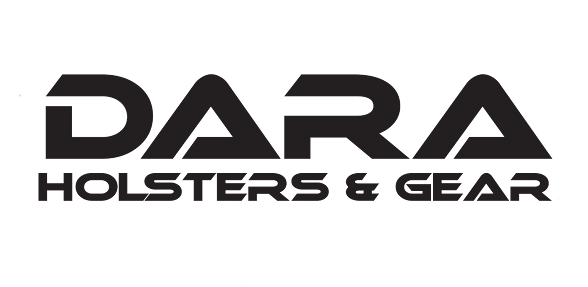
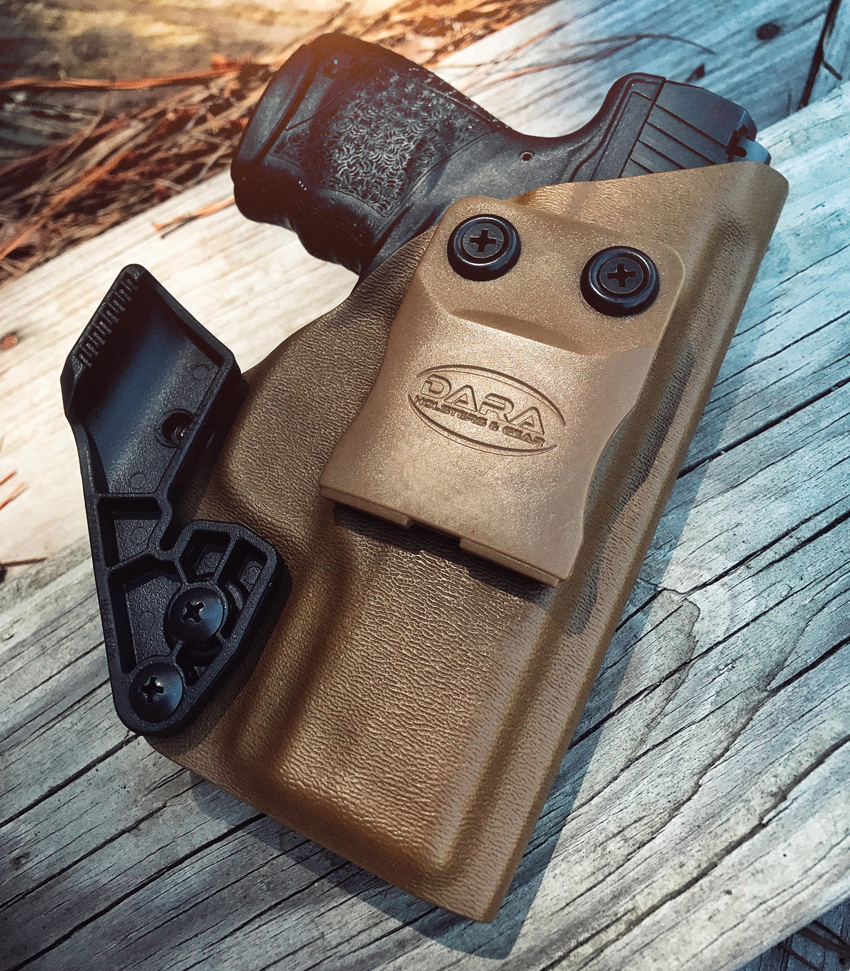
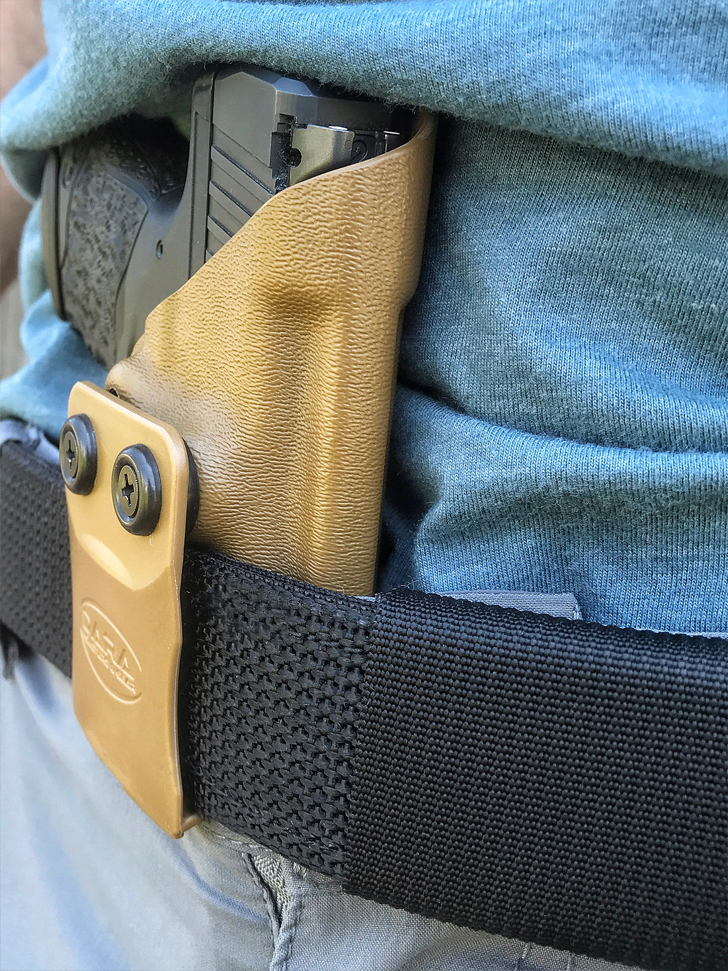
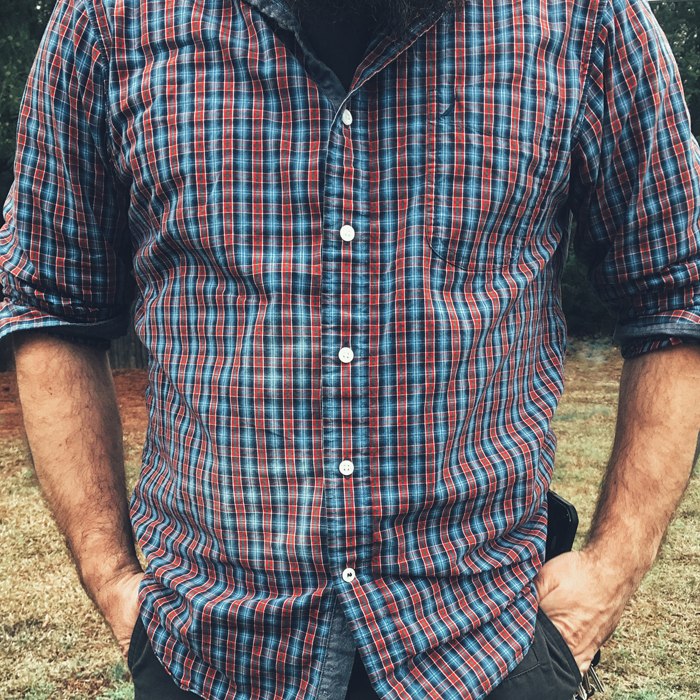
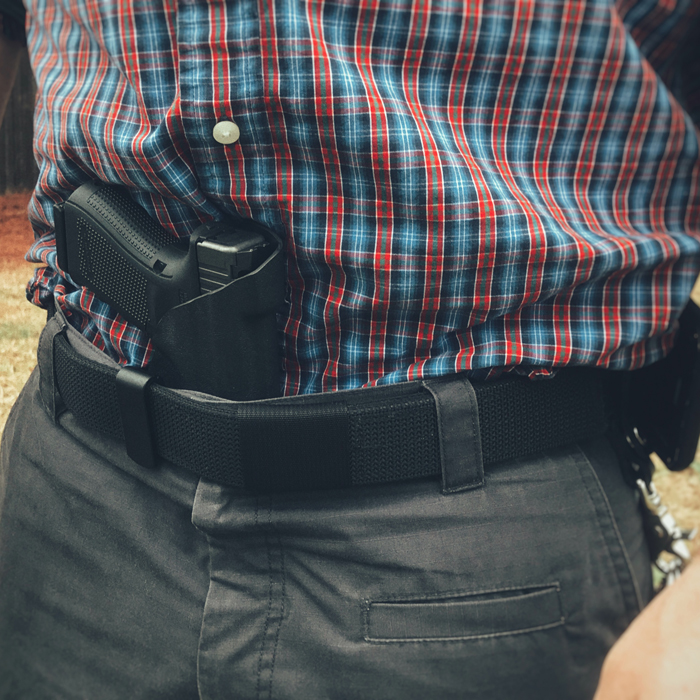



Comments
Post a Comment